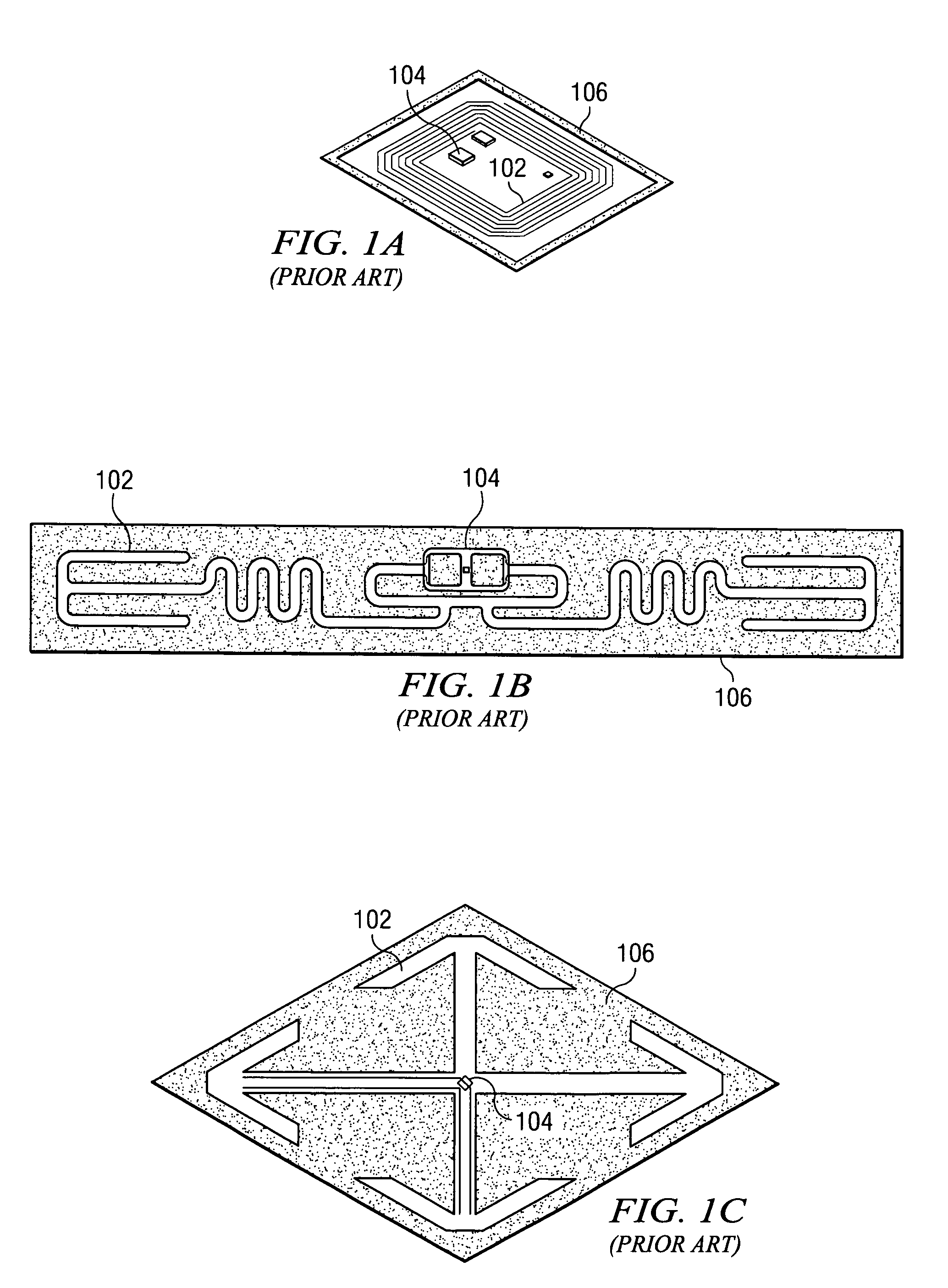Method for slap-and-ship RFID labeling
a technology of rfid labeling and labeling, applied in the field of slap-and-ship rfid labeling, can solve the problems of information not being read, tags escaping interrogation, limited data capacity,
- Summary
- Abstract
- Description
- Claims
- Application Information
AI Technical Summary
Problems solved by technology
Method used
Image
Examples
Embodiment Construction
[0110]While the invention is described below with respect to a preferred embodiment, other embodiments are possible. The concepts disclosed herein apply equally to other similar methods for applying RFID tags to products and shipping containers of all varieties, and associating and tracking serialized numbers, product information, and shipping information in conjunction with each RFID tag. RFID tags may be either passive or active. Any type of RFID tag may be used with the invention including RFID tags of any shape, size, and having components of any shape, size, and functionality. Throughout this description, “product” refers to any item, unit, or individual product, while “container” refers to any shipping unit comprising multiple products. For example, a product may be a case of beverages, and a container may be a pallet, box, or crate.
[0111]FIG. 3 shows an overall schematic view of a manufacturing and shipping process in which an RFID tag application process may be integrated ac...
PUM
 Login to View More
Login to View More Abstract
Description
Claims
Application Information
 Login to View More
Login to View More - R&D
- Intellectual Property
- Life Sciences
- Materials
- Tech Scout
- Unparalleled Data Quality
- Higher Quality Content
- 60% Fewer Hallucinations
Browse by: Latest US Patents, China's latest patents, Technical Efficacy Thesaurus, Application Domain, Technology Topic, Popular Technical Reports.
© 2025 PatSnap. All rights reserved.Legal|Privacy policy|Modern Slavery Act Transparency Statement|Sitemap|About US| Contact US: help@patsnap.com



